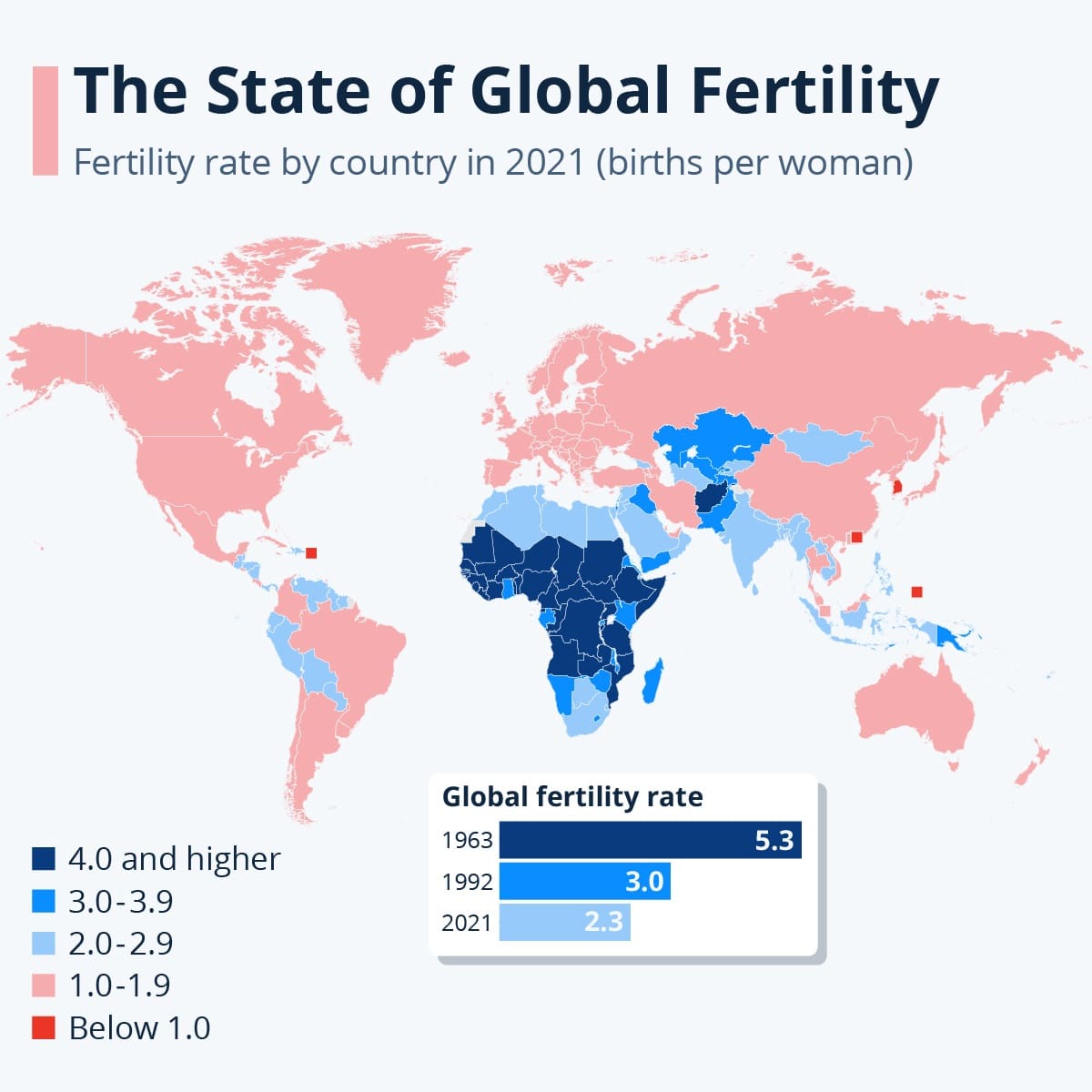A new study published in the prestigious journal The Lancet has shed light on a significant global trend: the steady decline of fertility rates worldwide. Conducted by researchers from the Institute for Health Metrics and Evaluation (IHME) at the University of Washington, the study analyzed data from the Global Burden of Diseases, Injuries, and Risk Factors Study 2021 to provide insights into future demographic changes.
Since 1950, the average number of children born to a woman, known as the fertility rate, has been steadily decreasing. In 1950, the global fertility rate stood at 4.84, but by 2021, it had dropped to 2.23. Projections from the study suggest that this decline will continue, reaching a predicted rate of 1.59 by the year 2100.
This downward trend in fertility rates represents a significant shift in human reproductive behavior and has far-reaching implications for societies worldwide. Dr. Jennifer D. Sciubba, a demographer and author not involved in the research, remarked on the unprecedented nature of this decline, noting that it reflects broader societal changes, including preferences for smaller families and increased opportunities for women in education and employment.

Factors Influencing Fertility Decline
The reasons behind the decline in fertility rates are multifaceted and vary across countries and regions. Economic factors play a significant role, with the direct costs of raising children and perceptions of financial stability influencing family planning decisions. Additionally, changing attitudes towards gender equality and evolving societal norms regarding family size contribute to the shift towards smaller families.
Dr. Gitau Mburu, a scientist at the World Health Organization, highlighted the diverse array of factors influencing fertility rates, including access to contraception and reproductive health services, perceptions of child mortality risks, and evolving cultural values.
Implications for Population Dynamics
Maintaining a total fertility rate of 2.1 children per woman, known as the replacement level, is crucial for sustaining stable population numbers. However, the study found that 46% of countries had fertility rates below replacement level in 2021, a figure projected to increase to 97% by 2100.
This demographic shift will have profound implications for societies worldwide. High-income countries are expected to face challenges associated with aging populations and declining workforces, including strains on healthcare systems and social security programs. Conversely, low-income regions may experience increased pressure on resources and infrastructure due to higher birth rates.

Adapting to Demographic Change
As societies grapple with the implications of declining fertility rates, there is a growing recognition of the need for proactive measures to address demographic shifts. Policies supporting female education and access to contraception are crucial for empowering women and facilitating informed family planning decisions.
However, researchers caution against coercive approaches to increase fertility rates, emphasizing the importance of respecting reproductive rights and individual autonomy.
As the world navigates the complexities of demographic change, innovative strategies and evidence-based policies will be essential for ensuring sustainable development and addressing the diverse challenges posed by shifting population dynamics.
The findings of this study underscore the importance of proactive planning and collaboration at the global level to adapt to the realities of a changing demographic landscape.





















